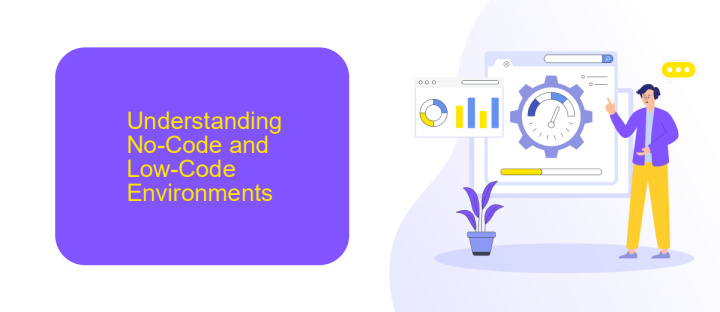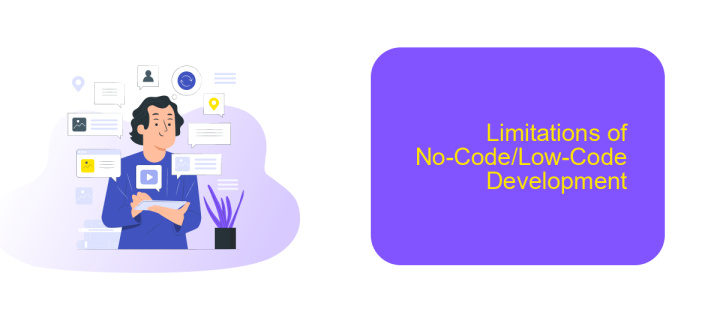What is a No-Code or Low-Code Environment?
A no-code or low-code environment is a revolutionary approach to software development that allows users to create applications with minimal or no programming knowledge. By leveraging intuitive visual interfaces and pre-built components, these platforms empower both technical and non-technical users to quickly develop and deploy applications, significantly reducing development time and costs.
Introduction
No-code and low-code environments are revolutionizing the way businesses approach software development. These platforms enable users to create applications with minimal or no coding knowledge, making technology more accessible to a wider audience. By using visual interfaces and pre-built templates, these environments significantly reduce the time and effort required to develop applications.
- Ease of use: Drag-and-drop interfaces simplify the development process.
- Cost-effective: Reduces the need for hiring specialized developers.
- Speed: Accelerates the development lifecycle and time-to-market.
- Flexibility: Allows for quick adjustments and iterations.
One notable example of a service that complements no-code and low-code environments is ApiX-Drive. This platform facilitates seamless integration between various applications and services without requiring extensive coding skills. By leveraging tools like ApiX-Drive, businesses can streamline their workflows and enhance productivity, making it easier to achieve their digital transformation goals.
Understanding No-Code and Low-Code Environments

No-code and low-code environments are revolutionizing the way software is developed by minimizing the need for traditional coding. These platforms provide visual interfaces and pre-built templates, enabling users to create applications through drag-and-drop functionalities. This democratizes app development, allowing individuals without extensive programming knowledge to build and deploy software solutions quickly and efficiently. By abstracting much of the underlying code, these environments reduce development time and lower costs, making them particularly attractive for startups and small businesses.
An essential feature of no-code and low-code platforms is their ability to integrate with various services and applications seamlessly. Tools like ApiX-Drive facilitate this integration by providing a user-friendly interface to connect different software systems without writing a single line of code. This enhances the flexibility and scalability of the applications built on these platforms, allowing businesses to automate workflows and streamline operations effortlessly. As a result, no-code and low-code environments are becoming increasingly popular across various industries, empowering users to innovate and adapt quickly to changing market demands.
Benefits of No-Code/Low-Code Development

No-code and low-code development platforms offer a range of benefits that make them an attractive option for businesses and developers alike. These platforms allow users to create applications with minimal coding knowledge, thereby democratizing the development process and accelerating time-to-market.
- Increased Productivity: By enabling rapid prototyping and development, no-code/low-code platforms significantly reduce the time required to build and deploy applications.
- Cost Efficiency: These platforms lower the financial barrier to entry, making it feasible for small businesses and startups to develop custom solutions without the need for extensive development teams.
- Flexibility and Scalability: No-code/low-code environments offer a high degree of flexibility, allowing for easy adjustments and scaling as business needs evolve.
- Enhanced Collaboration: These platforms facilitate better collaboration between technical and non-technical team members, fostering a more inclusive development process.
- Integration Capabilities: Tools like ApiX-Drive simplify the process of integrating various services and applications, enhancing the overall functionality and interoperability of the developed solutions.
In summary, no-code and low-code development platforms empower organizations to innovate faster, reduce costs, and improve collaboration. With the added benefit of seamless integrations through services like ApiX-Drive, these platforms are becoming an essential part of the modern development landscape.
Limitations of No-Code/Low-Code Development

No-code and low-code environments offer significant advantages, but they come with their own set of limitations. One of the primary challenges is the lack of flexibility. These platforms often provide pre-built templates and components, which can restrict customization options for unique business needs.
Another limitation is scalability. While no-code and low-code tools are excellent for small to medium-sized projects, they may struggle to handle complex, large-scale applications. This can be particularly problematic for growing businesses that require robust, scalable solutions.
- Integration Issues: Integrating with external systems can be challenging. While services like ApiX-Drive can simplify this process, not all integrations are straightforward.
- Security Concerns: These platforms may not offer the same level of security as custom-coded solutions, making them less suitable for sensitive applications.
- Limited Customization: The drag-and-drop nature of these tools can limit the ability to create highly customized features.
Despite these limitations, no-code and low-code environments remain valuable tools for rapid development and prototyping. However, businesses should carefully consider their long-term needs and potential constraints before fully committing to these platforms.
Conclusion
In summary, no-code and low-code environments are revolutionizing the way businesses approach application development. By enabling users with little to no programming experience to create functional applications, these platforms democratize the development process and reduce dependency on traditional software developers. This shift not only accelerates project timelines but also fosters innovation by empowering a broader range of individuals to contribute their ideas and solutions.
Furthermore, the integration capabilities of no-code and low-code platforms are crucial for their effectiveness. Tools like ApiX-Drive facilitate seamless integration with various services, allowing users to automate workflows and connect disparate systems effortlessly. As these environments continue to evolve, they promise to make technology more accessible and adaptable, ultimately driving efficiency and growth across industries.
FAQ
What is a No-Code or Low-Code Environment?
Who can benefit from using No-Code or Low-Code platforms?
What types of applications can be built using No-Code or Low-Code platforms?
Are No-Code or Low-Code platforms secure?
How easy is it to integrate No-Code or Low-Code applications with other software?
Apix-Drive is a universal tool that will quickly streamline any workflow, freeing you from routine and possible financial losses. Try ApiX-Drive in action and see how useful it is for you personally. In the meantime, when you are setting up connections between systems, think about where you are investing your free time, because now you will have much more of it.

